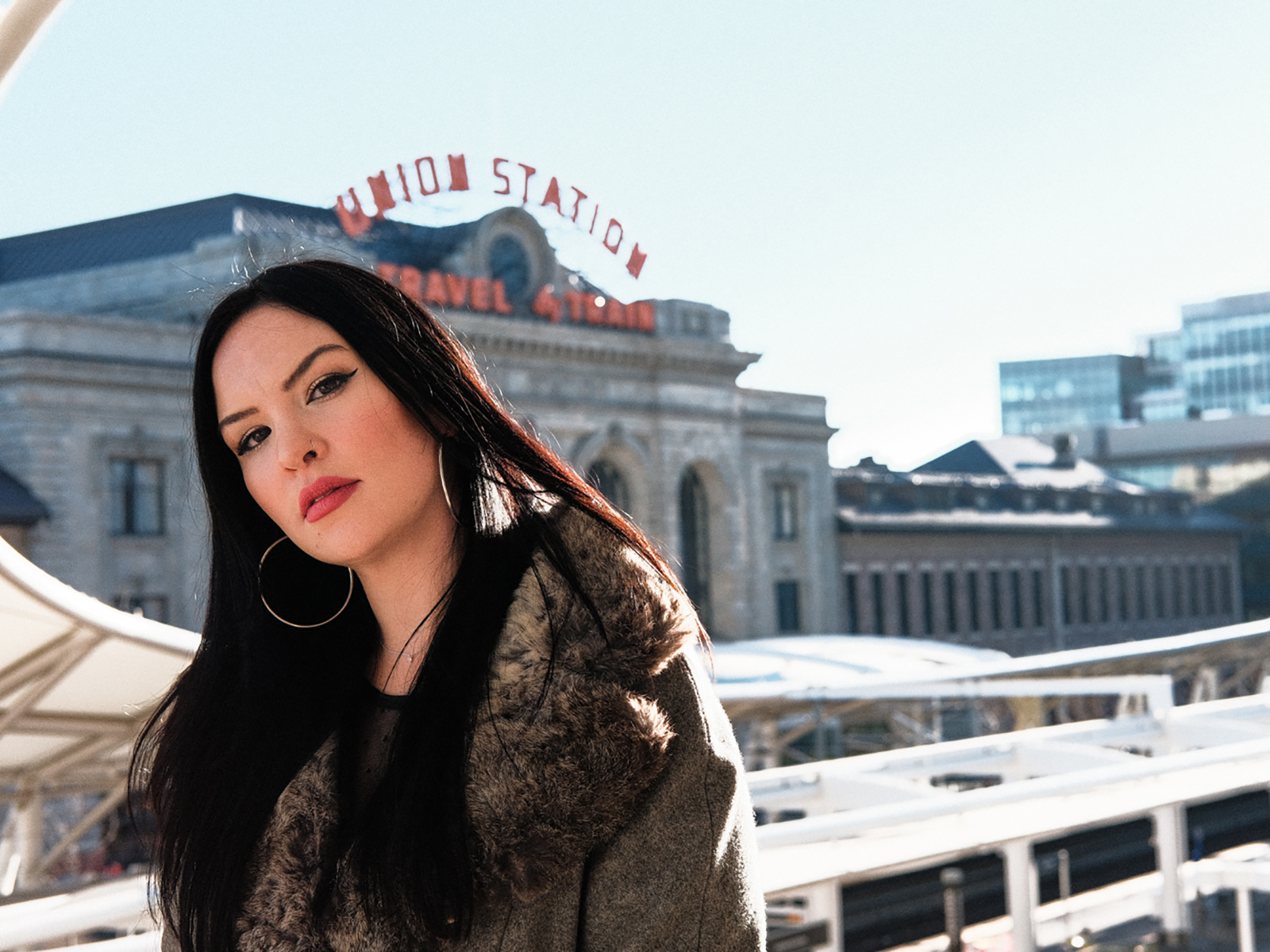The Local newsletter is your free, daily guide to life in Colorado. For locals, by locals.
The Denver that Kali Fajardo-Anstine remembers from her childhood is not the one we see today, filled with traffic and neighborhoods with names like “Highland” and “RiNo.”
“It seemed like Denver was a place you wanted to escape back then,” she says. “It felt like people were kind of embarrassed at this cow town they came from.”

Fajardo-Anstine didn’t feel that way. Born and raised in Denver, she has a Chicano heritage that reaches back centuries to southern Colorado, where her ancestors lived before Colorado was part of the United States. She feels a closeness to the city and the state that escapes verbal expression, but is clearly evident in Sabrina & Corina, her short story collection released April 2 from Penguin Random House’s One World imprint. The book received a nomination for a National Book Award in September.

The 11 stories in her collection are all set against the backdrop of Colorado (with a couple departures to California). Some are in Denver; some are in Saguarita, Colorado, a fictional town Fajardo-Anstine created as a southern Colorado setting to allow herself creative leeway in the way she wrote about the place and the landscape.
Fajardo-Anstine was drawn to literature and storytelling at an early age. “I had a sort of chaotic childhood,” she says, “and reading was one of the ways that I was able to create safety within my life.” Her mother, who runs the Journey Through Our Heritage program at Metropolitan State University, was a professional storyteller when Fajardo-Anstine was growing up and would come to her elementary school and perform stories from their Chicano heritage, as well as other world traditions. Fajardo-Anstine remembers being embarrassed by this, but the exposure spurred her interest in stories. “Early on … I had an awareness that myth transcended people,” she says.
The stories in Sabrina & Corina aren’t myths themselves, but now and then, a myth floats in, shared from one character to another or as part of first-person narration, evoking a sort of magic and surrealism that softens the more serious themes of the stories while driving them deeper into the imagination.
Fajardo-Anstine draws heavily from her personal experience in her writing. A carriage house that a girl and her mother move into in “Any Further West” is a recreation of a carriage house that Fajardo-Anstine lived in during her brief time in California for graduate school. The retirement community mentioned in “Julian Plaza” is based on a retirement community she spent time in as a child. The house in “Galapago” is based on a house her aunt lived in on Galapago Street.
When Fajardo-Anstine was in college at Metro State, studying Chicano Studies and English, she was struck by the lack of literature that represented her community.
“There weren’t very many narratives that were presented to me about Latinx identity that included people who were native and indigenous to the continental United States,” she says. “A lot of the stories … surround this narrative of the recent immigrant and they position Latinos as people who recently arrived in the United States—but there are whole populations of Latinos who have been here before 1848.”
This observation has driven her writing. Many of her characters share her Chicano heritage and her experience growing up in Denver. They comment on the change they see in Denver, from new neighborhood names (Highland was formerly Northside) to construction and overall gentrification. These comments don’t take over the stories, but they flavor them and are part of Fajardo-Anstine’s attempt to “preserve the Denver I knew.”
Fajardo-Anstine’s stories aren’t light-hearted, but they drive contemplation about the ways people relate within families, friendships, and romantic relationships. A recurring question is how one person’s actions can indelibly impact the lives of others: A mother’s decision to embrace her daughter’s half-brother. The former alcoholic who gets out of prison and moves in with her brother and young nephew. The college student whose boyfriend disappears without warning. And on the macro level, societal actions and impacts through gentrification in a rapidly changing Denver.
Fajardo-Anstine’s family has experienced gentrification in tangible ways: Her uncle had to sell the house her great-grandparents had owned in Five Points because he couldn’t keep up with the property taxes. Her aunt who lived on Galapago Street had to do a reverse mortgage, and when she died, her house went to the bank.
“My family can’t afford the old neighborhoods, I can barely afford to rent here, and I just kind of feel alienated in my native space,” she says. When she moved back to Denver after finishing her MFA at the University of Wyoming, the city was unrecognizable to her. “But I still could feel the Denver that I knew underneath everything that was changing.”
The Denver underneath, the Denver that Fajardo-Anstine knows, is the one revealed in Sabrina & Corina, a collection of stories centered on human themes of love and brokenness and loss and our tendency to grasp for the things we desire most.
Editor’s note, 9/21/19: This story has been updated to reflect the book’s nomination for a National Book Award.








